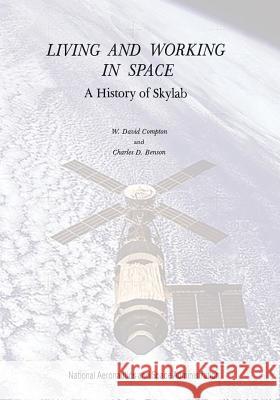Living and Working in Space: A History of Skylab » książka
Living and Working in Space: A History of Skylab
ISBN-13: 9781497451346 / Angielski / Miękka / 2014 / 470 str.
The program that became Skylab was conceived in 1963, when the Office of Manned Space Flight began to study options for manned programs to follow Apollo. Although America's lunar landing program was a long way from successful completion, it was not too soon to consider what should come next. The long lead times required for space projects dictated an early start in planning if manned spaceflight was to continue without a momentum-sapping hiatus. The circumstances in which this planning was conducted in 1963-1 967 were not auspicious. A consensus seemed to exist that earth orbital operations offered the most promise for "exploiting the investment in Apollo hardware-a favorite justification for post-Apollo programs. But firm commitment and support were less evident. A minority opinion-strongly expressed-condemned the lunar landing as an expensive and unnecessary stunt. NASA's budget requests were rigorously scrutinized and had to be justified as never before. To compound the space agency's problems, the Air Force embarked on a program that seemed to duplicate OMSF's proposals. And NASA's policy-makers seemed to be waiting for a mandate from the country before proceeding with post-Apollo programs. Nonetheless, OMSF went ahead, developing both general plans and a specific idea for manned earth-orbital operations. In 1965 the Apollo Applications Program office was opened to oversee programs using the impressive capability developed for the lunar landing to produce results useful to clients outside the aerospace complex. Initial plans were grandiose; under the pressures generated by the completion of Apollo, they yielded until by 1969 a bare-bones, three-mission program remained. Part I of the present volume details the background against which post-Apollo planning was conducted-the cross - currents of congressional doubt, public opposition, and internal uncertainty that buffeted Apollo Applications from 1963 to mid-1969. When Apollo 11 returned safely, Apollo Applications - or Skylab, as it was soon renamed - emerged as a program in its own right, successor to Apollo, which would lay a foundation for manned spaceflight for the rest of the century., Although it used Apollo hardware and facilities, Skylab's resemblance to the lunar-landing program ended there; and in part II we examine how Apollo components were modified for earth-orbital operations. The modification of existing spacecraft, the manufacture and checkout of new modules, the design of experiments for science and applications, and the changes in astronaut training, flight control, launch operations, and inflight operations that had to be made, all created new problems. Coordination among NASA Headquarters, the field centers, experimenters, and contractors may have been more complex than it had been in Apollo, and program management as a crucial part of the program is discussed in part II. Part III chronicles the missions and examines the program's results. An accident during launch of the workshop very nearly killed Skylab aborning, and saving the program called for an extemporaneous effort by NASA and its contractors that was matched, perhaps, only by the effort that saved Apollo 13. That done, the three manned missions set new records for sustained orbital flight and for scientific and technological productivity. A preliminary assessment of the results from Skylab and a chapter on the last days of the spacecraft conclude part III.
Zawartość książki może nie spełniać oczekiwań – reklamacje nie obejmują treści, która mogła nie być redakcyjnie ani merytorycznie opracowana.











